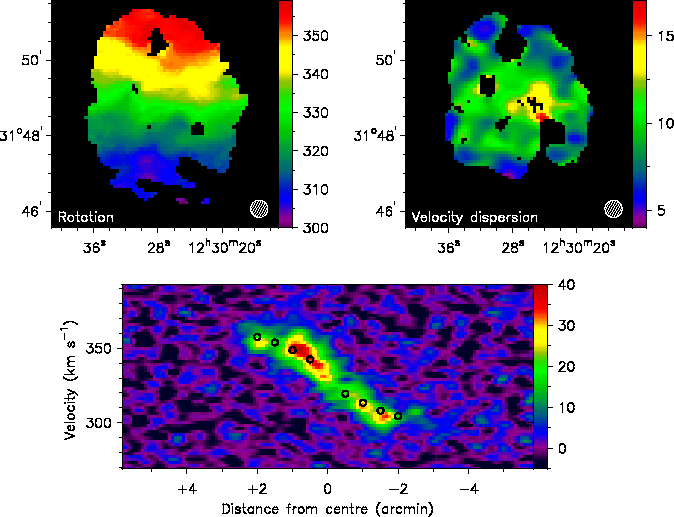|
|
Dwarf Irregular Galaxies
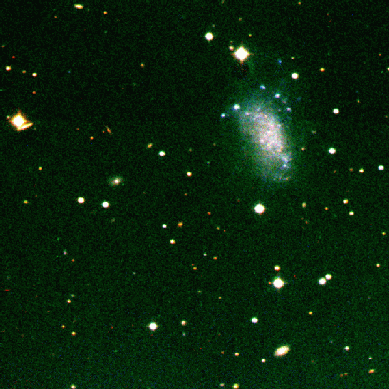
|
The picture (left) is an approximate
"true colour" image of the dwarf galaxy DDO 43, which is part of a
sample of 30 dwarf galaxies observed with the WSRT for this
project. The distribution of atomic hydrogen in this galaxy is almost
circular, which indicates that we see this dwarf almost face-on. The
rotation axis of the atomic hydrogen appears in projection along the
minor axis of the elongated optical structure, which is probably a
bar. The three brightest HII regions are near the top side of the bar.
Notice the faint blue star in between the two bright stars just above
the bar. Deep H-alpha images display a circular nebulosity around this
object (e.g. Hunter et al. 1993, AJ 106, 1797). Such blue star
formation knots outside the bar region are observed in some other
dwarf galaxies as well.
|
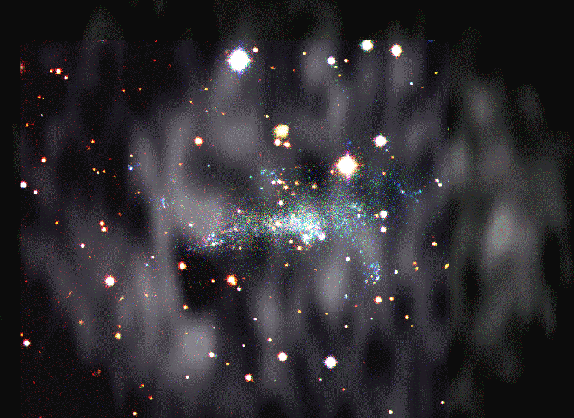
|
This is a composite image of an optical image
of DDO 47 (colour) and and HI image from the Westerbork telescope
(grey shades). Note the large extent of the atomic hydrogen as compared with
the stars. In my thesis, I study the distribution and dynamics (rotation and
velocity dispersion) of atomic hydrogen and their relation to stellar tracers
of the stellar population, such as colour and H-alpha emission.
|
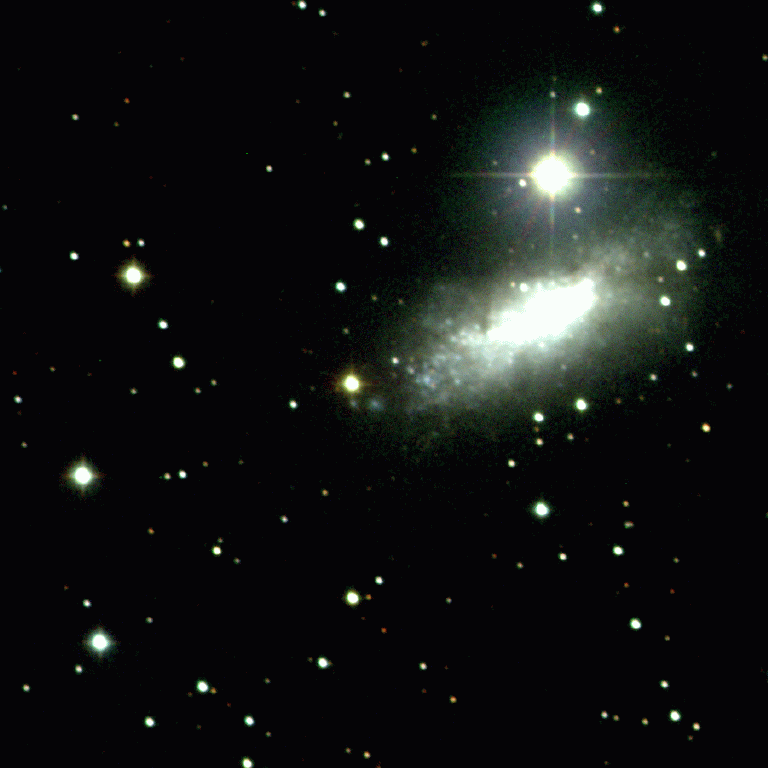
|
NGC 1569 is a peculiar dwarf galaxy, which experienced a very high rate
of star formation in the past 150 million years. At the moment, the
star formation rate seems to decline a bit. At a distance of only 2.2
Megaparsec, it is the nearest starburst galaxy (you might have though
M 82 was the nearest!). The outflow of gas from NGC 1569 has been studied
in great detail. In my thesis (Chapter 8), I present maps of the
high-velocity NEUTRAL hydrogen in NGC 1569, as well as a previously
unknown nearby cloud of atomic hydrogen which might be colliding with
NGC 1569.
|
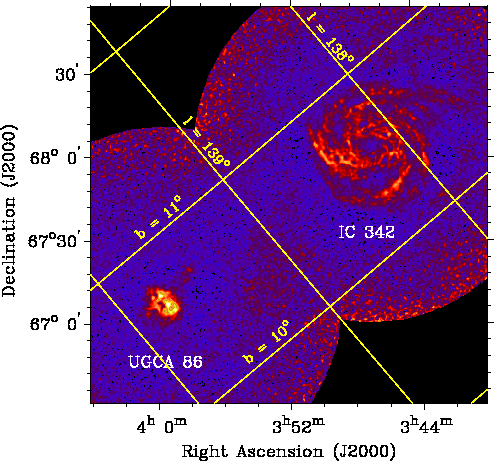
|
HI image of the pair of galaxies IC 342
(type Sc) and UGCA 86 (type Im). The peculiar HI morphology and kinematics
and the radio continuum emission of UGCA 86 are the subject of a paper
by Stil, Gray, and Harnett (2004),
ApJ, accepted.
|
|
